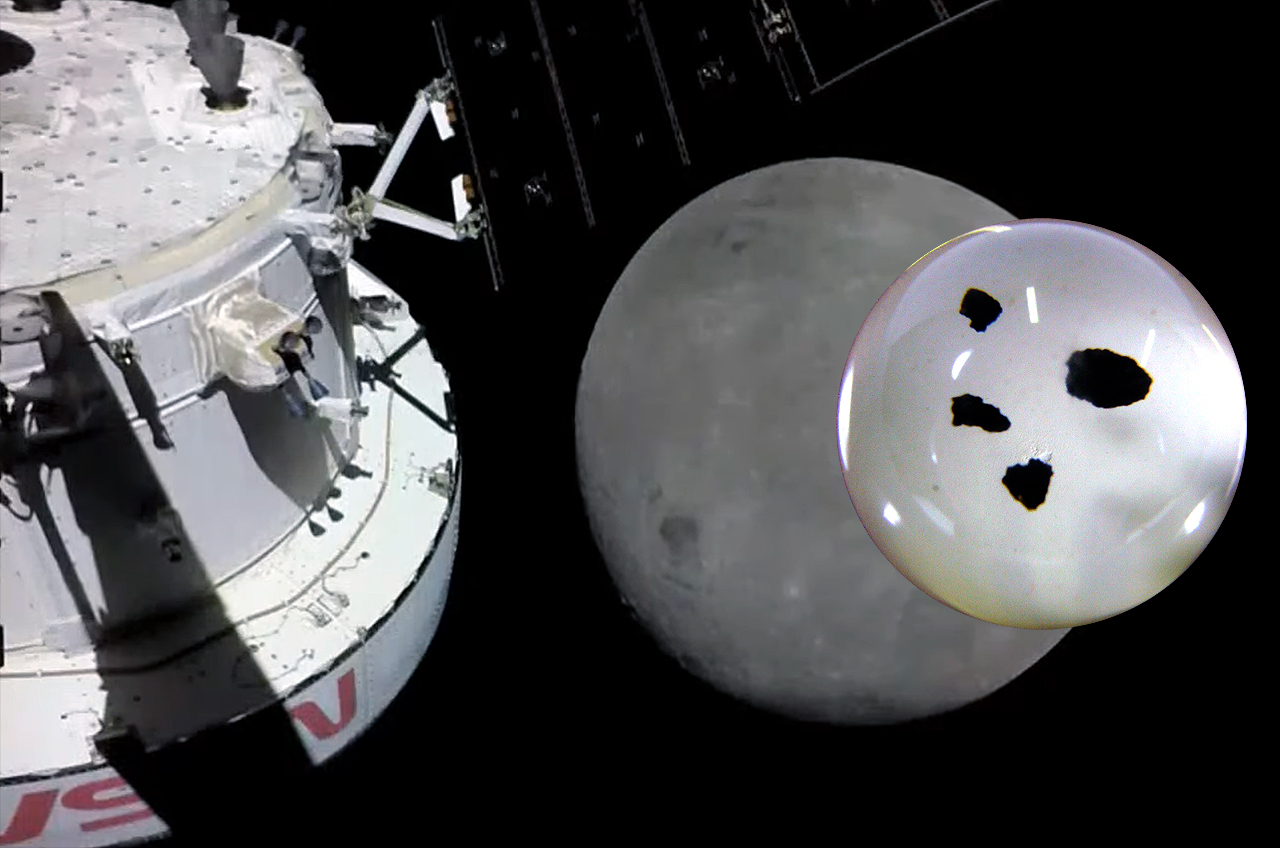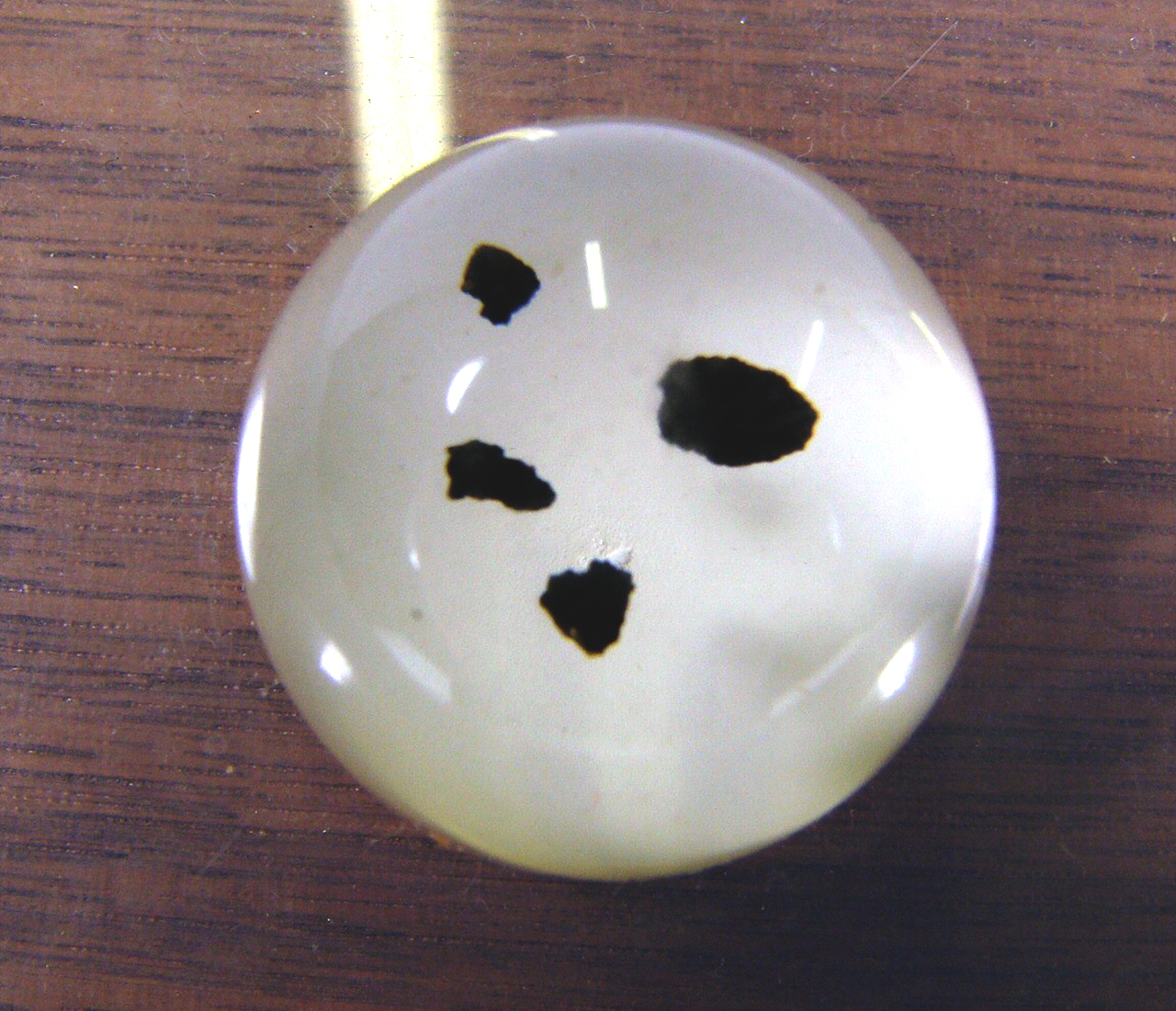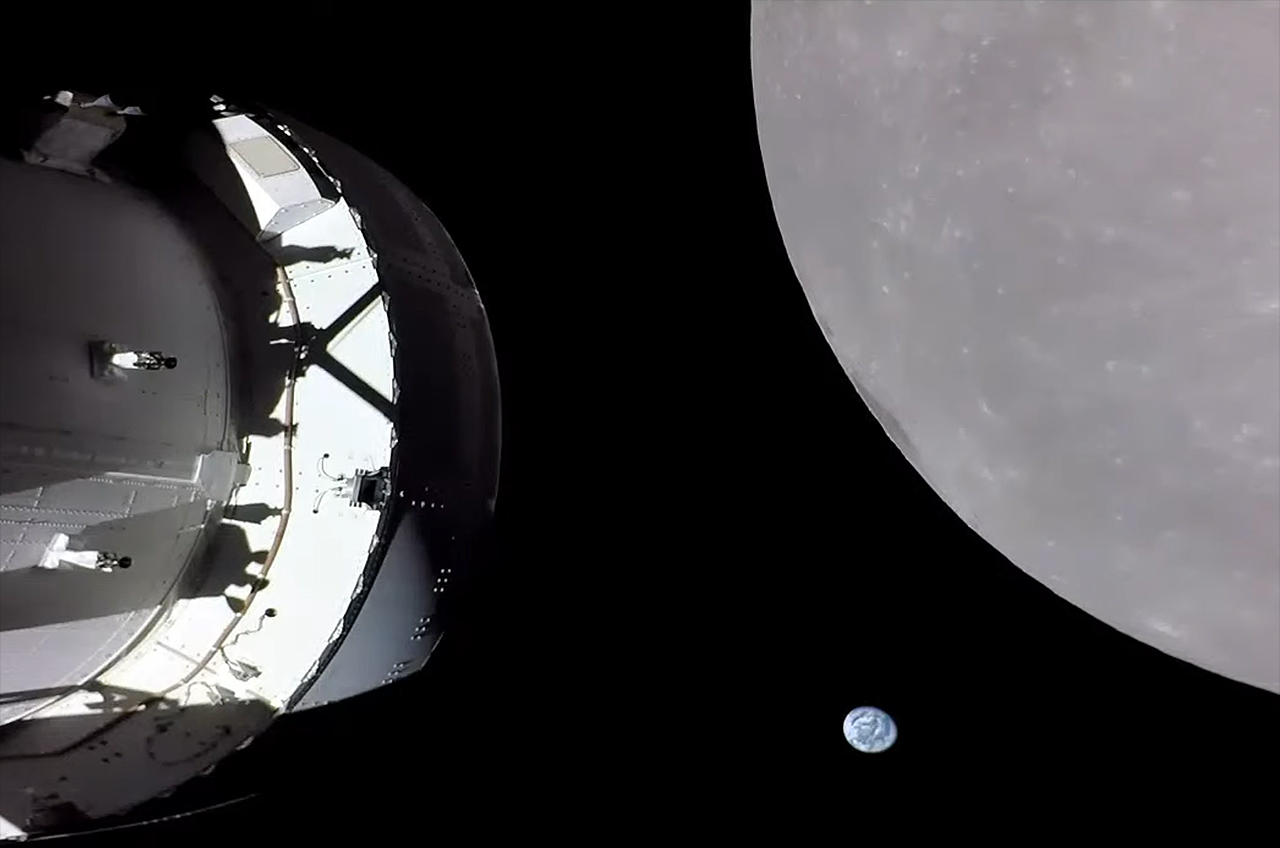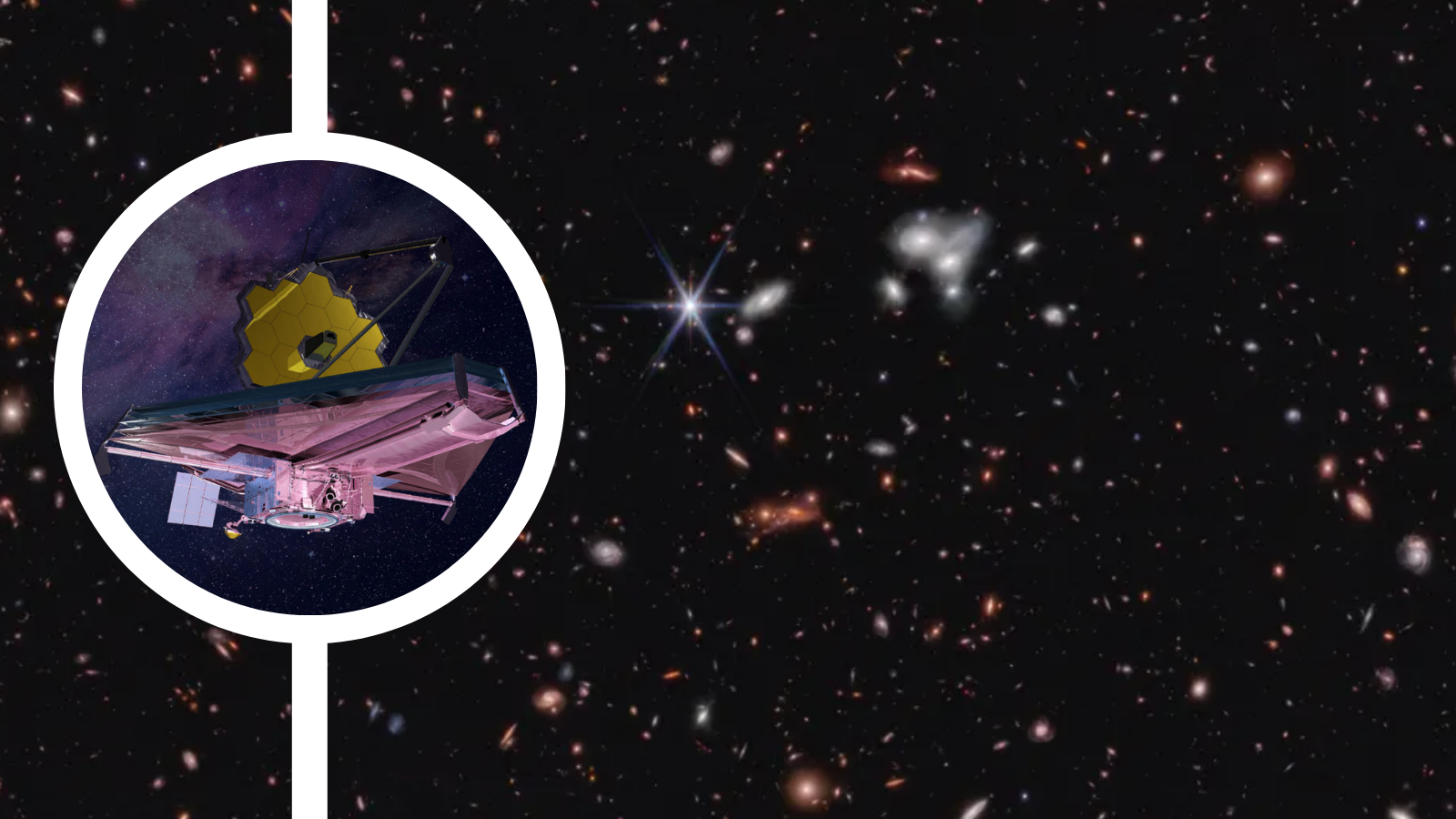NASA's Artemis 1 spacecraft flies by moon with Apollo 11 lunar soil aboard
Artemis 1 is only the second time a piece of the moon has been brought back to the moon.

Four small pieces of the moon on board NASA's Orion spacecraft have come closer to the lunar surface than they have been in the more than 50 years since they were collected.
The lunar samples' return home — or, at least, their quick flyby of the world from which they came — was part of a larger journey to prepare for people to do the same. The quad of dust specks, which were first brought back to Earth by Apollo 11 astronauts Neil Armstrong and Buzz Aldrin in 1969, came within 80 miles (130 kilometers) of the moon on Monday (Nov. 21) as part of NASA's Artemis 1 mission.
While the lunar material's inclusion on the Orion capsule linked the Apollo and Artemis missions, the close flyby of Earth's natural satellite fulfilled a more critical purpose — to use the moon's gravitational force to direct the spacecraft toward its entry into a lunar distant retrograde orbit.
The successful maneuver marked only the second time that a lunar sample revisited the moon. Previously, a rock recovered by the Apollo 12 astronauts flew on Apollo 16 as part of a 1972 investigation into the moon's magnetic field.
Seconds in space
The four Apollo 11 lunar samples flying on Artemis I are embedded inside what NASA calls a "button," a small lucite bubble.
"For Apollo 11, we had the goodwill samples. These were individual, greater than 2-millimeter [0.08-inch] fragments separated out of the biggest of soil collected on Apollo 11 and they were gifted to every country and every state. We made more than we handed out, we had four or five leftover. This is one of the leftovers," Ryan Zeigler, Apollo sample curator at the Johnson Space Center in Houston, told collectSPACE.com.

The 0.002 ounces (0.05 grams) of Apollo 11 moon dust inside the button is a tiny percentage of the 842 pounds (382 kilograms) of lunar material returned by the first moon landing mission. If the Artemis program is successful in establishing a sustainable human presence on the moon, then the total samples from the six Apollo lunar landing missions may someday be a small percentage of the moon rock on Earth.
Get the Space.com Newsletter
Breaking space news, the latest updates on rocket launches, skywatching events and more!
The Artemis 1 mission is the second time this particular button has been launched back into space. It is also the second flight for these Apollo 11 samples aboard an Orion spacecraft. The same lucite-encased dust from Tranquility Base first flew aboard the Exploration Flight Test-1 (EFT-1) in 2014. On that mission, the Orion flew into high Earth orbit before plunging back to the planet and splashing down.
The button on Artemis 1 is also the second Apollo 11 sample currently in space. Another of the leftover goodwill display has been on board the International Space Station since 2010 as part of a plaque pairing it with a rock collected off the top of Mount Everest, Earth's highest mountain.
Beyond the moon
Orion entered into the lunar sphere of influence at 2:09 p.m. EST (1909 GMT) on Sunday (Nov. 20), five days into its 25-day mission, transitioning from Earth to the moon being its main gravitational draw. The spacecraft performed a trajectory correction burn overnight and then fired its orbital maneuvering system engine for two minutes and 30 seconds at 7:44 a.m. EST (1244 GMT) on Monday to accelerate into the flyby.
The closest approach followed 11 and a half minutes later.

"We will be passing over some of the Apollo landing sites," Jeff Radigan, NASA's Artemis 1 flight director, said a pre-flyby press briefing in response to a question from collectSPACE. "We'll be going over the the Apollo 11, 12 and 14 sites, or close to them. Unfortunately, they are going to be in the darkness, they will not be sunlit, so we won't get very good video of them. But we will definitely be close to history when we do the power flyby."
As expected, communication with Orion was lost for 34 minutes beginning at 7:26 a.m. EST (1226 GMT) as the spacecraft passed behind the moon. The Goldstone ground station in southern California, part of the Deep Space Network, reacquired Orion's signal once it emerged from the far side.
Orion will enter its distant retrograde orbit on Friday (Nov. 25). A day later, it will pass the distance record set by the Apollo 13 mission in 1970 when it reaches its maximum distance from Earth, approximately 268,554 miles (432,194 km), on Nov. 28.
Orion — and its Apollo 11 moon rock payload — will again perform a close flyby of the moon on their way back to Earth on Dec. 5. The Artemis I mission will come its end six days later with a splashdown in the Pacific Ocean on Dec. 11.
Follow collectSPACE.com on Facebook and on Twitter at @collectSPACE. Copyright 2022 collectSPACE.com. All rights reserved.
Join our Space Forums to keep talking space on the latest missions, night sky and more! And if you have a news tip, correction or comment, let us know at: community@space.com.

Robert Pearlman is a space historian, journalist and the founder and editor of collectSPACE.com, a daily news publication and community devoted to space history with a particular focus on how and where space exploration intersects with pop culture. Pearlman is also a contributing writer for Space.com and co-author of "Space Stations: The Art, Science, and Reality of Working in Space” published by Smithsonian Books in 2018.In 2009, he was inducted into the U.S. Space Camp Hall of Fame in Huntsville, Alabama. In 2021, he was honored by the American Astronautical Society with the Ordway Award for Sustained Excellence in Spaceflight History. In 2023, the National Space Club Florida Committee recognized Pearlman with the Kolcum News and Communications Award for excellence in telling the space story along the Space Coast and throughout the world.










